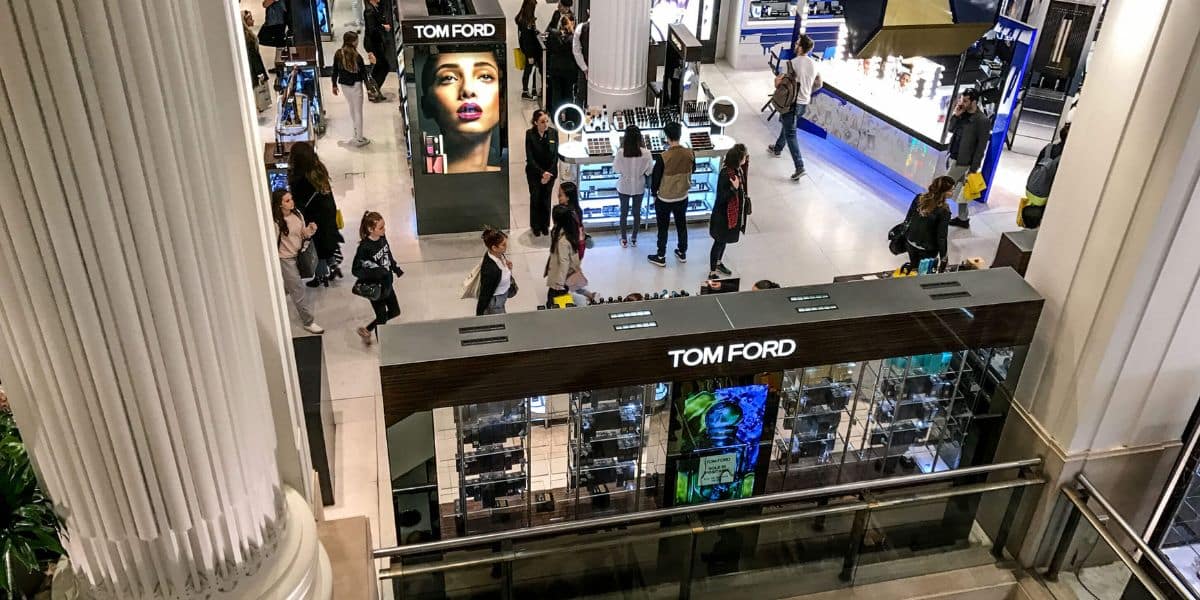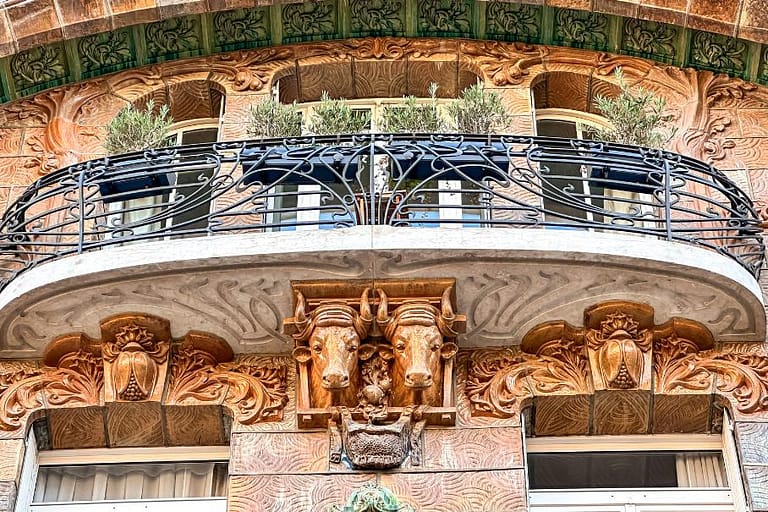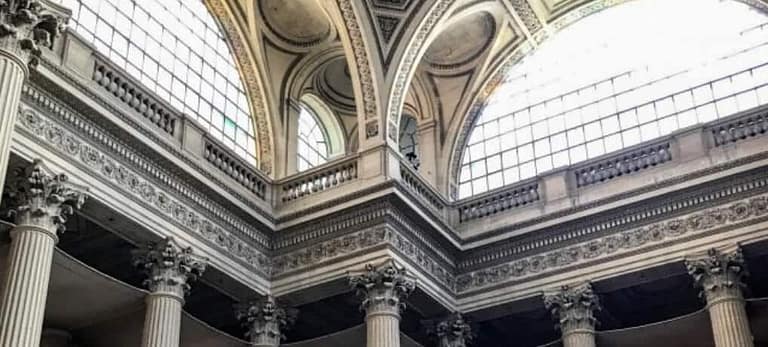The Fascinating History of Selfridges Department Store in London
London is a treasure trove of attractions. In addition to the many historical monuments, cultural attractions and architecture that London offers, a visit to the iconic Selfridges Department store on Oxford street should be on your list too. The store is more than just a shopping destination. It has a long and fascinating history and was created by a man that has singlehandedly changed how we shop.
UK’s second-largest department store (after Harrods) was founded by an American, Harry Gordon Selfridge. It has been an engaging shopping destination for luxury goods since it opened its doors. Today, the Selfridges store in London is a shopping mecca for designer brands and luxury goods spread over six floors with restaurants, bars, personal shopping and beauty services. But if you love history and a good underdog story, then Selfridges is the place to visit.
Affiliate Disclosure – This post contains affiliate links. If you make a purchase through these links, I may earn a commission. This doesn’t affect your purchases or any fees you may pay for the product or service. Read more in my DISCLAIMER.
Mr. Selfridge on Netflix
If you think Selfridges is just a store for shopping expeditions, you’re in for a surprise. To learn more about the department store’s history, check out the Netflix show called Mr. Selfridge. It stars Jeremy Piven as Harry Selfridge, and it’s a behind-the-scenes look at one man’s vision to revolutionize the shopping experience.

Along with a colourful cast of characters, the storyline follows the trials and tribulations of Harry Selfridge, his family and his employees. The show starts about a year before the store opened in March 1909 and ends in 1928, although the store’s history continues to this day.
As far as period dramas go, this one is also a feast for the eyes. You get to see the fashion of the day, where people lived and worked. In addition, you get a glimpse of turn-of-the-century London and what luxury looked liked like in the early 20th century. I don’t have to tell you how much that appeals to me as London is one of my fave cities.


Who was Harry Selfridge?
Harry Gordon Selfridge was an American tycoon (don’t you just love that word?) and a man with a vision. An entrepreneurial sort from an early age, Harry worked his way up at the most successful store in Chicago – Marshall Field and Company. This later became what we know today as Macy’s.
His early life was typical quite typical of the day. Harry’s father abandoned his wife and three sons after the American Civil War, leaving Harry’s mother to care for the children. Two of his brothers died young, leaving Harry and his mother to care for each other. Harry worked from a young age and amassed a substantial fortune over time. He also married well – his wife, Rose Buckingham, came from a wealthy ad prominent Chicago family.


Harry Selfridge had a dream backed by innovation, tenacity and passion. When Harry arrived in London in 1906, he noticed a lack of great shopping galleries and stores. He saw an opportunity to create a shopping experience that rivalled those back home and in Paris. He took London by storm, scandalizing the upper crusts of British society. Most bet on him to fail before the store even opened.
Harry was a man of invention. He wanted shopping to be an entertaining and pleasurable experience for everyone with outstanding customer service. His passion and vision created a unique shopping experience and changed the way retail evolved to this day and earned him the nickname of the Earl of Oxford Street.
History of Selfridges in London
Harry Selfridge invested £400,000 in his new store and hired the American architect Daniel Hudson Burnham to design it. He decided on a location across the Bond tube station in what was then an unfashionable western end of Oxford Street. Even in those days, the real estate cost must have been a steal. Considering how successful the store became, this was a sound investment.
Harry Selfridge was a brilliant marketer, and he used his skills to the fullest. Taking a chance on the location was a strategic decision that was, in a way, revolutionary. Make them curious enough to come and awe them once they get inside.

He placed adverts and stories in local papers to build anticipation before the store even opened its doors. He penned columns in the paper under a pen name, paid illustrators to create visuals for the papers, and made friends with critical people. When the store finally opened in May 1909, it caused a stir.
Harry Selfridge was an innovator when it came to keeping people entertained. He brought in educational and scientific displays and hosted extravagant events and indulgent activities on the rooftop to attract people inside.
The store wowed people for decades and received the title of the Best Department Store in the World four times. The Great Depression, however, took a toll on the store, and so did Harry’s debts. Forced out by the board in 1941, Harry died in 1947 of bronchial pneumonia at age 89.
Why made Selfridges revolutionary?
By opening his store, Harry Selfridge created a cultural and social phenomenon. He was a genius at anticipating the needs of their customers before they even knew what they wanted. Walking into the Selfridges department store was unlike any other experience. All customers were welcomed and were invited to browse around without the pressure to buy.

Until then, shops were places for necessities, and not everyone was allowed inside. You were expected to buy without touching the merchandise. I can see why you’d want to spend as little time in a shop like that, and the opening of Selfridges changed that.
A new layout
Instead of shops with a single purpose and items hidden away from reach, Selfridges made it all accessible. Items, grouped together over five store floors, created a pleasant adventure for the senses.
There was even a library, unique reception rooms, elegant yet affordable restaurants, and many other features designed to keep customers in the store for as long as possible. Strategically placed soft lighting added to the ambiance while shoppers perused different items they didn’t know they needed.

One of the game changers was moving the perfume counter front and centre of the shopping floor. Perfume counters were highly profitable, and this strategy proved so successful we still see it in today’s department store layout. In the show, Harry decides to mask the smell of horse manure from the streets every time the door opens. Whatever the reason, it was a great decision.
Supporting women’s empowerment
Having been raised by a single mother and surrounded by women all his life (wife, daughters and mistresses) made him more attuned to their needs. Selfridges employed many women, and Harry himself was a big supporter of the Suffragette movement. His store and its window display championing their cause was the only shop on Oxford Street not to have its windows smashed by the Suffragettes as they demonstrated for their cause.
The store became a safe place for women to gather and indulge. At the Selfridges department store, women could socialize with ease, and Harry made sure of that. It became a place where women could shop and enjoy the company of their friends without the constrictions of society.
Selfridges Window displays
Today, window displays are a common practice. From small shops to large department stores, windows aim to bring people inside. Harry Selfridge made them into an art form. From the dramatic unveiling of the windows on its opening day, they played a role in the customer experience in his store.
The Selfridges window displays were the first step of the theatrical-like experience of shopping at the store. You can imagine how enthralling they must have looked to the people of London. It was a novelty never seen before and worked just as Harry intended. Even if you couldn’t afford to buy anything, you could still be part of the experience from the outside. It was genius.
Harry’s legacy
Harry Selfridge created a legacy. He was a savvy businessman, marketer and showman. A creative storyteller that made the shoppers part of the show. He created seasonal sales, emphasized customer service and supported causes he believed in. The Selfridge department store continues that tradition by championing the Project Ocean initiative to protect oceans from pollution and over-fishing.

Many things we take for granted when we shop today come from Harry’s philosophy of the shopping experience should be. From advertisements, sales and markdowns to layouts of the stores and how merchandise is displayed, it goes back to a man with a dream.
Selfridges today
After Harry Selfridge, the Selfridges stores were owned by a series of different companies, including the John Lewis Partnership, the Sears group owned by Charles Clore and Diadora. In 2003, Canadian Galen Weston bought the stores for about £598 million. However, the Weston family recently sold the majority of the Selfridges Group to a Thai conglomerate Central Group and Austria’s Signa Holdings in 2022.
On the outside, Selfridges is a massive building with columns, oversized windows, and many flags on its roof. Today, this area is far from undesirable. It’s hard to imagine what it looked like in Harry’s days. His investment has paid off, and his name continues to carry the luxury and service he envisioned.
Walking in, I was trying to picture it as it looked on the show. Numerous renovations and improvements (hello escalators) have changed the layout, which is still impressive. I can see how Londoners of the 1900s would have felt walking into a place like this. This would have been jaw-dropping awesome with fancy displays, luxurious items, and a strategically staged atmosphere. Like a magical fantasy world. No wonder they stayed and stayed.
The shopping options are endless. Name a designer, and I’m sure it’s here. You can walk for hours between displays, mannequins and merchandise right at your hands. It’s not that much different from any other department store I’ve ever been to from that perspective.
It was fun to visit a place I’d seen on TV. I imagined for a moment that I’d stepped into the show, only in a different time. As much as I love shoes and clothes, my favourite part was the many dining areas. So many beautiful pastries, yummy food, chocolates, candy, and so much more. It was a good idea to come here after breakfast; otherwise, I would’ve been tempted to eat my way through this place.
Bringing it together
I had a fun time visiting Selfridges. It was probably because I watched the show and knew about its history. You can experience a place differently depending on how much you know about it, and this was one of those places. If I had walked in without any previous knowledge, it would have been just a giant department store with interesting decor pieces and tons of people. Now, if you decide to stop by, you’ll know more about the store’s early days. Enjoy!







